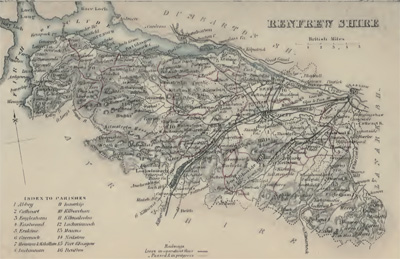Robert Hunter from Neilston, now East Renfrewshire
Robert was a merchant and in 1824 he was living in Siam. Siam and Bangkok were a bit of a powderkeg in these days as shown in The King and I film.
Robert and his family operated four ships trading between Siam and Singapore. Robert himself was awarded the powerful position of harbour master which meant any overseas trade had to come through him and any European wishing to speak with the King had to first get it cleared through Robert. At that time he was the fourth most powerfull man in Siam, where he was involved with the Siamese Royal Family. He was given permission by the King to build his own house by the river which was normally reserved for the Royal Family.
He married a Siamese / Portugese wife, Angelina Sap, from the large Portugese colony around Bangkok. Their sons were sent back to Scotland to be educated, Robert having refused to allow them be brought up in the Catholic faith. One of these sons, also a Robert Hunter returned to Bangkok after completing his education. He became a favourite at the Palace of Siam and rose in rank to become secretary / translator for the King. The enviroment must have been fierce, in these times for a European, even a Scotsman. The wife of his son described him in a book she wrote, "Mr Hunter always very serious when sober was very volatile when he was not...". Whether this was a way of coping it was to be his undoing and he later fell from favour. His arrogance went too far and he was banished. One of his misdemeanours was said to be opium smuggling, and another that if certain of his demands were not met, he would turn his guns on the Royal Palace.
Robert's father Robert senior died in Scotland in 1848 where he had returned to after being thrown out of Siam. Robert junior also married a Portugese wife and also sent his two sons back to Scotland for education. History repeating itself. These two boys named Robert and John, returned to Siam and worked for the government. Neither of them married and they died in 1889 and 1891 respectively. Having outlived their father who had died by drowning in 1865. Eventually the palace and temples of what is now known as Thailand were left behind and Scotland became the centre of family business activities. Some of the Scottish family members drifted southwards via Northumberland and Durham, Yorkshire and East Anglia.



